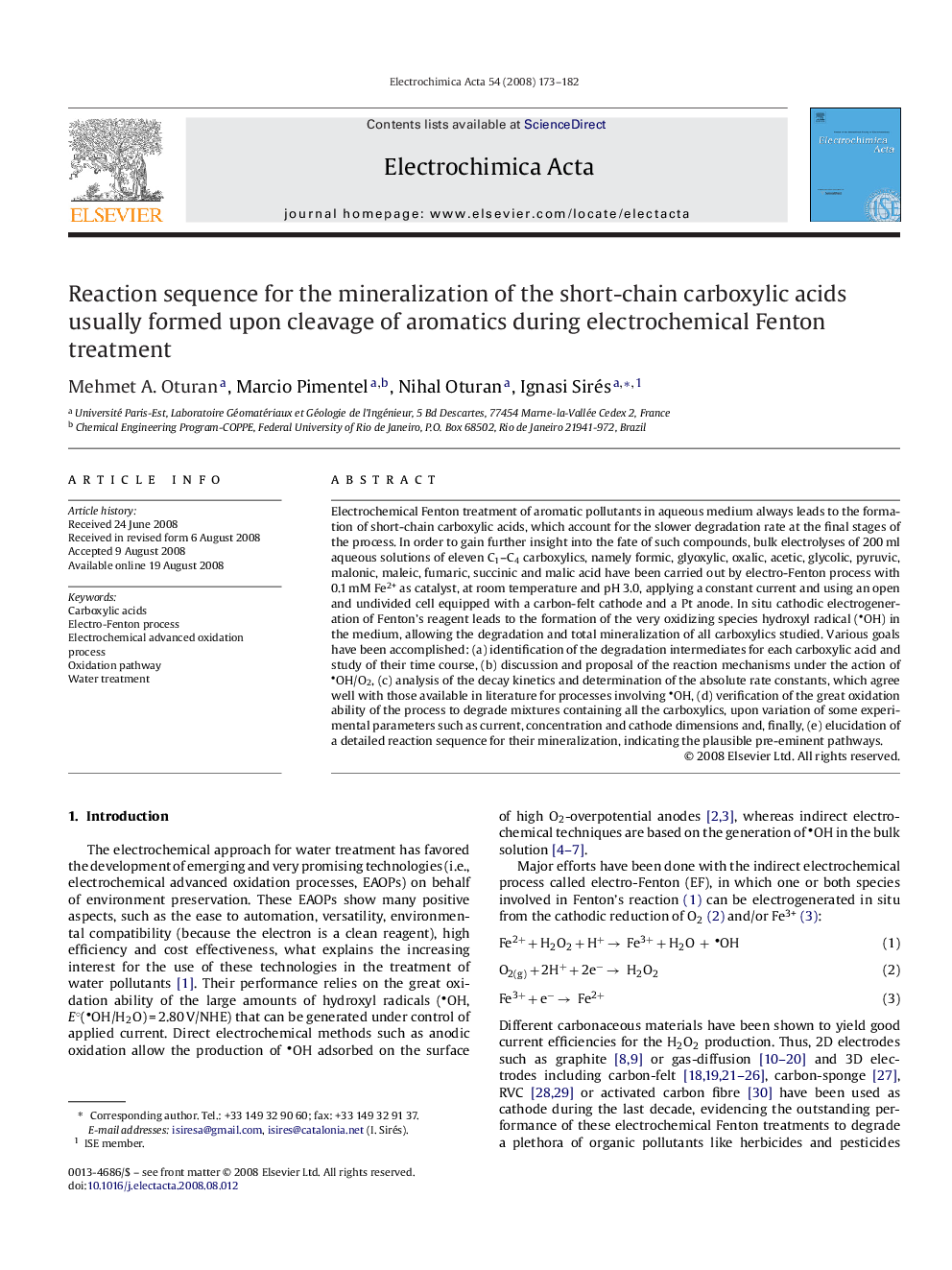| Article ID | Journal | Published Year | Pages | File Type |
|---|---|---|---|---|
| 194122 | Electrochimica Acta | 2008 | 10 Pages |
Electrochemical Fenton treatment of aromatic pollutants in aqueous medium always leads to the formation of short-chain carboxylic acids, which account for the slower degradation rate at the final stages of the process. In order to gain further insight into the fate of such compounds, bulk electrolyses of 200 ml aqueous solutions of eleven C1–C4 carboxylics, namely formic, glyoxylic, oxalic, acetic, glycolic, pyruvic, malonic, maleic, fumaric, succinic and malic acid have been carried out by electro-Fenton process with 0.1 mM Fe2+ as catalyst, at room temperature and pH 3.0, applying a constant current and using an open and undivided cell equipped with a carbon-felt cathode and a Pt anode. In situ cathodic electrogeneration of Fenton's reagent leads to the formation of the very oxidizing species hydroxyl radical (OH) in the medium, allowing the degradation and total mineralization of all carboxylics studied. Various goals have been accomplished: (a) identification of the degradation intermediates for each carboxylic acid and study of their time course, (b) discussion and proposal of the reaction mechanisms under the action of OH/O2, (c) analysis of the decay kinetics and determination of the absolute rate constants, which agree well with those available in literature for processes involving OH, (d) verification of the great oxidation ability of the process to degrade mixtures containing all the carboxylics, upon variation of some experimental parameters such as current, concentration and cathode dimensions and, finally, (e) elucidation of a detailed reaction sequence for their mineralization, indicating the plausible pre-eminent pathways.
